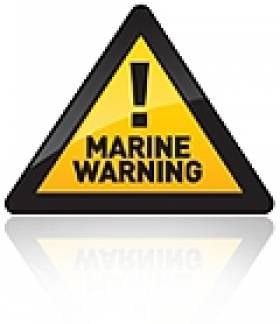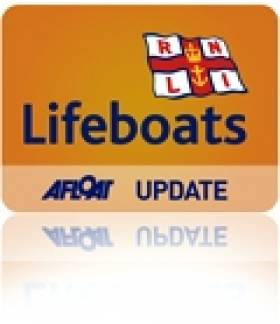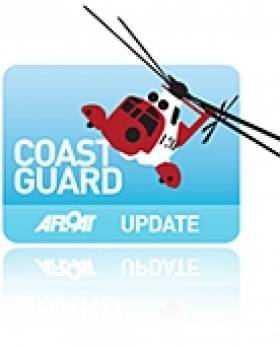Displaying items by tag: Irish Coast Guard
Irish Coast Guard Reveals Spike in Incidents Involving Leisure Activities, Merchant Vessels
The Irish Coast Guard has released statistics revealing a busy summer period and a significant increase certain types of search and rescue incidents.
Most notable is the increase in incidents involving leisure activities such as surfing, diving, and canoeing.
There was also an increase in the number of merchant vessels requiring assistance, which was up approximately 50% on 2010 figures.
Irish Coast Guard director Chris Reynolds said: "We began our safety awareness campaign in May, which was aimed at holidaymakers and members of the public who were planning water sports, enjoying cliff walks or engaging in coastal activities throughout Ireland. We also targeted walkers and climbers.
"Despite the advice and information provided, we have seen a significant increase in requests for assistance for some incidents over this summer (particularly leisure-based water-activities) and a 20% increase in taskings of our helicopters and crews."
However, Reynolds added that while the total number of incidents has remained broadly the same as last year, there was a 75% increase in lives saved so far in 2011 "which demonstrates that the Coast Guard safety message is getting through".
Marine Notice: Hydrographic Survey off Dundalk
The latest Marine Notice from the DTTAS advises all seafarers near Dundalk Bay and Carlingford Lough to give a wide berth to the hydrographic and oceanographic survey operation in the area this month.
The RV Celtic Voyager (callsign EIQN) will be carrying out survey operations between Kildeel and Clogherhead till 15 September.
The vessel will display lights and markers and will be towing different sensors from time to time with a single cable of up to 100m long.
Deployment of water level recording equipment will be necessary on the seabed at certain locations. These will be marked with appropriate buoys and lights as well as Irish Coast Guard radio notices.
Details of the survey area are included in a PDF of Marine Notice No 44 of 2011, which is available to read or download HERE.
Software Instrumental to Rescue of Rambler 100 Crew
Search and rescue mapping software developed in Rhode Island was "instrumental" in efforts to retrieve crewmembers from the stricken Rambler 100 off Fastnet last week.
The SARMAP software, developed by ASA (Applied Science Associates, Inc) provides rapid predictions of the movement of drifting objects and missing persons at sea.
For search and rescue units it can provide search patterns and calculate the probability of containment, probability of detection, and probability of success.
As previously reported on Afloat.ie, the Rambler 100 capsized off the Cork coast while competing in last weekend's Rolex Fastnet Race.
The Rambler 100’s personal locator beacon activated when the yacht overturned, which alerted rescuers to the location of the 16 stranded crewmembers still with the vessel, but recovering the five lost at sea required a more advanced approach.
The Irish Coast Guard used SARMAP’s sophisticated tracking capabilities to predict the movement of the drifting survivors and calculate a precise search area.
ASA president Eoin Howlett commented: “We have successfully worked with the Irish Coast Guard for many years; they are an innovative agency and have a history of implementing the latest in ocean technologies.
"We are very pleased that our software, combined with their rapid decision-making, resulted in such a positive outcome.”
Flares No Help to Mayo Fishermen Stranded at Sea - MCIB Report
Two Mayo fishermen stranded at sea after their boat capsized were not assisted after they used flares, a Marine Casualty Investigation Board (MCIB) report has found.
The report, released earlier this week, recounted that the 33m crabber Léim an Bhradán had set out from Porturlin in Ballina on the morning of Saturday 30 October last on a routine fishing trip to retrieve and reset crab and lobster pots some 12 to 15 miles offshore.
The vessel was manned by skipper John O’Donnell, aged 18 at the time, and crew Nathan Flannery, in his 20s, both young men but with many years of fishing experience between them.
At some time between 1pm and 1.45pm, after having successfully hauled and re-shot one tow of pots, a second tow, in the process of being hauled, was partially aboard being emptied and re-baited.
The vessel was listing slightly to starboard due to the pots being hauled over that side when a large wave broke over the starboard quarter and flooded the working deck.
This caused the vessel to list further to starboard, allowing more water over the side and causing the stacked pots and boxes to shift, increasing the angle of the list and throwing both men into the water before the boat capsized and sank rapidly.
The boat's canister-type liferaft, which was not secured to the vessel but stored in a cradle on top of the wheelhouse, floated to the surface with a life ring. O’Donnell and Flannery managed to inflate the raft and climb aboard around 2pm, after some difficulties in operating the gas inflation cannister and releasing the raft from its securing straps.
The men then opened the SOLAS B equipment pack stored on the liferaft and released two parachute flares, 20 minutes apart, with no response. At around 3pm the pair spotted an Irish Coast Guard helicopter and released an orange smoke signal, but the chopper did not respond. It later transpired that this aircraft was the Sligo-based coastguard helicopter on a training exercise.
Several hours later, the alarm was raised ashore when the Léim an Bhradán had not returned to port. A rescue helicopter and lifeboat were tasked to the scene before midnight and the liferaft was located just after 1.30am.
O’Donnell and Flannery, who had earlier donned thermal suits to protect from the cold, were picked up and brought ashore by the lifeboat. Neither was injured in the incident.
The MCIB report found that had the lifeboat been secured to the vessel, it would have been in a position to inflate correctly as per its design.
It also found that had the EPIRB emergency beacon been mounted to a 'float free' bracket outside the wheelhouse, rather than stored inside, it would have floated to the surface and activated automatically, notifying the coast guard immediately.
Neither skipper nor crew was in possession of the boat's handheld VHF set, the report noted, which hampered their ability to contact any nearby vessels for assistance.
Rambler 100 Crew Member 'Feels Lucky to be Alive'
An Australian crewmember on the stricken Rambler 100, which capsized in high winds during yesterday's Rolex Fastnet Race, has told reported that he feels "lucky to be alive".
Mike Motti was one of five crew who were separated from the yacht when it overturned near Fastnet Rock off the Cork coast.
He and his fellow crewmembers spent two hours adrift on a liferaft before they were rescued in foggy conditions which made the search all the more difficult.
“I’m feeling lucky to be alive, happy to be here and it’s great to see the local people here to greet us,” Motti told The Irish Times.
Fellow crewman Michael van Beuren said the yacht capsized within 30 seconds when its keel fin snapped in heavy seas.
All 21 crew were rescued from the yacht last night in an operation led by the Baltimore RNLI lifeboat and the Irish Coast Guard.
Fastnet Yacht Capsizes Off Cork Coast - Latest
A US entrant in this year's Rolex Fastnet Race capsizsed near Fastnet Rock off the Cork coast earlier this evening, The Irish Times reports.
Further to our previous report, The Irish Times notes that 22 people were on board the Rambler 100, which overturned in force-five winds at around 6.30pm this evening.
The Department of Transport confirmed that all crew have been accounted for, with 16 sitting in the hull of the boat and the remainer on life rafts.

Rambler 100 rounds the Fastnet Rock. Photo: Daniel Forster/Rolex
RNLI Baltimore's lifeboat and the Irish Coast Guard are currently attending. Coastguard helicopters have also been dispatched, with naval vessel LE Clara giving assistance. The rescue effort has been hampered by misty conditions in the area this evening.

Baltimore lifeboat at the scene of the capsized Rambler 100. Photo: Carlo Borlenghi/Rolex
Rambler 100 recently set a new world record for the almost 3,000-nautical mile transatlantic crossing from Newport, Rhode Island to Lizard Point in Cornwall with a time of 6 days, 22 hours, 8 minutes and 2 seconds.
In other Fastnet action, there was disaster in IRC Z this afternoon for co-skippers Karl Kwok and Jim Swartz’s Farr 80 Beau Geste (HKG).
The yacht suffered a ‘structural problem’ while mid-away across the Celtic Sea en route to the Rock. She has since turned her bow back towards Land’s End.
Yesterday there was another high profile retirement when Johnny Vincent’s TP52 Pace (GBR) returned to her berth in the Hamble with mast problems.
In the Class 40s John Harris’ GryphonSolo2 (USA) has also pulled out, retiring to Dartmouth with sail damage.
- Fastnet
- Cork
- Rolex Fastnet Race
- Lifeboat
- Coastguard
- Irish Coast Guard
- Transatlantic
- Hamble
- Search and Rescue
- Fastnet Rock
- Department of Transport
- world record
- Helicopter
- 2011
- capsize
- TP52
- Land's End
- Rambler 100
- RNLI Baltimore
- IRC Z
- Kark Kwok
- Jim Swart
- Farr 80
- Beau Geste
- Johnny Vincent
- Pace
- John Harris
- GryphonSolo2
- Dartmouth
- Class 40
Five Rescued When Yacht Gets Tangled in Galway Bay
Galway's RNLI lifeboat was dispatched to retrieve the men after their distress call to the Irish Coast Guard.
The men were en route to Rossaveal Harbour at the time when their yacht became tied up in fishing pots.
Two Rescued in Galway Bay After Powerboat Breakdown
BreakingNews.ie reports that a Galway lifeboat rescued two men from a powerboat in Galway Bay yesterday afternoon.
The men were found drifting close to rocks after their 19-foot broke down south of New Harbour shortly after lunchtime.
The Irish Coast Guard Rescue Helicopter and the RNLI Lifeboat responded in minutes to the men's distress call.
Hull Damage To Blame for Stranded Divers
The accident that left four divers stranded off the Wexford coast last weekend was caused by damage to their boat's hull.
Divernet reports that the accident occurred when a section of tubing at the RIB's bow broke away from the hull.
The search operation, which included four RNLI lifeboats, an Irish Coast Guard helicopter and shore unit, was launched last Friday night when the group of divers failed to return to shore.
The divers were rescued at 6am on Saturday morning near the Saltee Islands, where they were found clinging to their upturned RIB.
Dramatic video of the divers' rescue was posted earlier this week on Afloat.ie.
Irish Coast Guard Chopper Deal Could Be Model for UK
The director of the Irish Coast Guard has outlined the thinking behind its recent €500m deal for helicopter search and rescue services.
Chris Reynolds told Rotorhub that a simplified model based on key critera was adopted when choosing a bigger for the contract, which was awarded to CHC Ireland last year.
"With our contract, we essentially wanted to continue with what we already had, but with new technology," he said.
Rotorhub reports that the Irish Coast Guard formed a Future Helicopter Study Group to discuss the service's needs before the tender process which led to the 10-year deal for five Sikorsky S-92s.
The process stands in contrast to SAR-H, the UK's programme to overhaul its helicopter fleet which collapsed last year.
"If the UK needs to be looking at a new interim contract, they could look at how we did it," added Reynolds.
Rotorhub has more on the story HERE.







































































